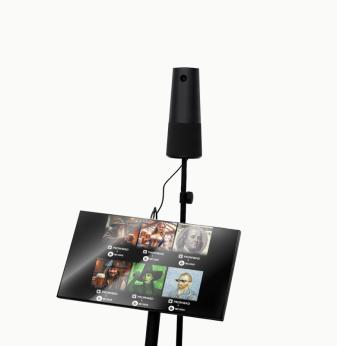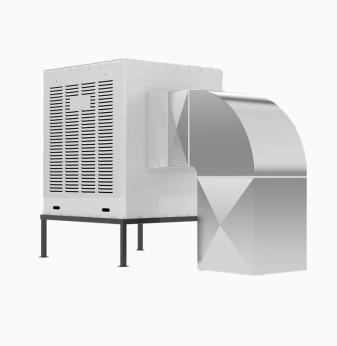Autonomous Overlays in Live Broadcasts: AI for Graphics and Subtitle Injection

Live broadcasts demand precision, timing, and visual coherence. In sports, news, concerts, and remote events, overlays (scoreboards, lower thirds, alerts, captions) are essential visual elements. Traditionally, these overlays are crafted and triggered by human operators or templated automation tools. But as events grow more complex and multi-source, manual overlay control becomes a bottleneck. Autonomous overlays—where AI systems dynamically generate, position, and inject graphics and subtitles in real time—promise to free human operators, reduce errors, and scale visual richness.
In this article, we explore the motivations, architectures, challenges, and deployment strategies for AI-driven overlays. We illustrate with use cases, design patterns, and integration paths.
Why autonomous overlays matter
Even in mature broadcast facilities, overlay workflows are labor-intensive. Producers and vision mixers manually cue graphics, time transitions, and adjust layout. As live events scale—multiple camera angles, remote contributions, micro-events—the human burden grows. Mistimed overlays, collisions with scene content, or missed cues can harm professionalism.
AI-driven overlays promise several advantages:
- Reduced manual latency and errors: AI can react faster than humans to dynamic events (score changes, social media triggers, breaking news).
- Scalability: The same overlay logic can apply across multiple events, languages, or regions without manual rework.
- Adaptive positioning: AI can avoid covering important visual content (e.g. faces, action zones) by intelligent layout.
- Accessibility and localization: Subtitles and translated overlays can be generated automatically and injected contextually.
- Personalization: For distributed viewers or localized feeds, overlays may adapt or vary per region or user preferences.
In the world of streaming and smart broadcasting, overlays shift from static design to dynamic content governed by AI logic.
Core components of AI-driven overlays
Deploying autonomous overlays for live broadcast involves several modules working in concert:
1. Event detection and decision logic
Overlay systems must know when and what to display. This requires real-time detection of events (goals, speaker change, poll result) via AI or external triggers. Decision logic maps events to overlay templates and determines content (text, image, metrics).
2. Layout planning and collision avoidance
Once overlay content is determined, the system must decide where and how to place it. AI layout modules analyze video frames (or metadata) to detect protected zones—faces, graphics, logos—and choose safe regions or recede overlays dynamically. This ensures overlays never block critical visuals.
3. Rendering and compositing
Overlay graphics and subtitles must be rendered (2D assets, vector, animated transitions) and composited into video frames. The rendering path must be low-latency and support smooth motion and transitions. In many architectures, overlay rendering runs on GPUs or FPGAs close to the video path.
4. Subtitle / caption generation
AI systems may perform speech-to-text, translation, or stylization to generate subtitles in real time, then position and render them as overlays. The system must respect reading speed, pause timing, line breaks, and avoid overlay conflicts.
5. Injection / mixing into feed
Once composited, the overlayed frames must feed into the broadcast encoder or distribution pipeline. The injection point may vary—just before encoding, in the production switcher, or at edge devices. Latency and synchronization are critical.
6. Fallback and human override
In certain cases—complex scene transitions, uncertain events, model low confidence—the system must yield to manual control or fallback to template overlays. A monitoring UI helps operators override or correct AI decisions in real time.
Architecture patterns and deployment modes
Below are typical deployment patterns for overlay injection:
Centralized rendering in master control
All overlay logic runs in a central control room. AI modules detect events, generate overlays, and composite into the master video before encoding. This simplifies control but requires high bandwidth and introduces single-point latency.
Edge overlay insertion
Overlay logic runs near cameras or contribution nodes. Overlays are composited earlier before encoding and distribution. This reduces backbone load and latency, particularly useful in geographic events or multi-site productions.
Hybrid overlay pipelines
Detection and logic run centrally, but rendering and compositing happen distributed. The control plane sends overlay commands and templates, while distributed nodes apply them locally, enabling lower latency and scale.
Client-side / post-render adaptation
In streaming environments, overlays (especially subtitles or viewer-specific elements) may be rendered or adjusted at the client side or player. This suits personalization, but is limited in content complexity and visual fidelity.
Pipeline layering
Overlay modules integrate with existing video pipeline stages: upstream ingress, switcher, encoding, distribution. They must synchronize with timecode, frame boundaries, and metadata.
Use cases and examples
Sports broadcasting and dynamic ads
In live sports, overlays drive score, timers, player stats, sponsor messages. Autonomous overlays detect game events (goals, substitutions) and dynamically inject graphics. Integration of markerless augmented advertisement (overlaying ads onto field surfaces dynamically) is a known research direction. arXiv
Contextual signage and lower thirds
In news or talk shows, overlay content like names, locations, and topics may change rapidly. AI can detect speaker faces or voice segments and auto-generate lower thirds, positioning them where they don’t obstruct the visual scene.
Multilingual subtitle injection
For international audiences, subtitles must be rendered in multiple languages. Autonomous overlays translate speech in real-time and inject captions, adjusting line breaks and position dynamically to avoid overlap with on-screen graphics.
Social triggers and engagement overlays
Live events often integrate social media, polls, or audience engagement overlays. AI systems detect sentiment, social activity, or winner votes and push overlays in sync.
Event highlight inserts
During live events, micro-highlights (replays, key moments) may be triggered. Overlays such as “Top Play” badges, score pulses, or dynamic banners can be inserted algorithmically.

Challenges and technical tradeoffs
Latency constraints
Overlay systems must operate within tight latency budgets (often <50 ms or frame-level limits) so overlays feel natural and synchronized. Every module (detection, layout, rendering, injection) must be optimized for speed.
Synchronization and jitter
Overlay frames must align precisely with video frames and timestamps. Jitter or drift across distributed nodes can cause visible misalignment or stutters.
Visual conflict and occlusion
Overlay placement must avoid covering faces, action zones, or critical graphical content. Misplaced overlays break viewer trust. Ensuring safe zones dynamically across camera angles is nontrivial.
Model confidence and error handling
AI detections might occasionally err. Confidence thresholds, fallback logic, or operator review must mitigate wrong overlays (e.g. naming the wrong person).
Asset management and performance
Overlay systems must manage graphical assets (images, fonts, animations) efficiently. Memory, caching, and asset switching must not stall rendering.
Scalability in multi-feed environments
In multi-camera, multi-feed broadcasts, the system must maintain consistency across feeds and scale logic and rendering across multiple nodes without overload.
Authoring and template design
Overlay templates must support variability (lengths, translations, transitions), but also be expressive. Designers must author flexible overlay designs that can adapt to dynamic content.
Quality evaluation and testing
Overlay systems require rigorous testing under varied conditions: lighting changes, fast motion, crowd scenes. Automated overlay QA pipelines should simulate edge cases and measure rendering correctness.
Implementation roadmap
Here’s a recommended path to adopt autonomous overlays:
- Event taxonomy & trigger mapping
Define which events (speech, score change, scene transitions) deserve overlay actions. Map templates and logic rules.
- Prototype detection modules
Use off-the-shelf detection models (face, OCR, scene change) to trigger overlay events reliably.
- Build layout planner & safe zone logic
Integrate scene analysis (object detection, salient zones) to compute safe overlay zones per frame.
- Render and compositing pipeline
Experiment with GPU or FPGA-based renderer for overlay blending, transition animation, and alpha blending.
- Subtitle generation & injection
Integrate speech-to-text and translation pipelines; begin with simple phrase-level captions and progress to dynamic overlays.
- Overlay injection & synchronization
Choose injection point (encoder, mixer, edge node) and ensure timing alignment and fallback.
- Operator UI & override
Develop a real-time dashboard to monitor AI decisions, override or correct overlays live.
- Stress testing & latency profiling
Simulate high-speed content, test jitter, measure pipeline latencies end-to-end, and refine performance.
- Pilot in live event
Deploy in a controlled broadcast, monitor overlays, collect operator feedback, tune thresholds, and fallback logic.
- Scale & refine
Expand to multi-camera, multilingual, personalized overlays. Introduce redundancy, model updates, and automatic fallback strategies.
Over time, autonomous overlay systems evolve from pilot experiments to core automation infrastructure in live broadcast.
Promwad’s vision and integration support
Promwad helps clients transition from manual overlay workflows to AI-enabled broadcasting systems. Our services include overlay trigger logic design, layout and safe-zone engines, GPU/FPGA-accelerated renderers, subtitle inference pipelines, and UI dashboards. We integrate overlay modules seamlessly with production switchers, encoders, and distribution chains. For clients with aggressive latency or edge constraints, we prototype distributed and hybrid overlay architectures. Our goal: make autonomous overlays a reliable, maintainable, and scalable component of modern live broadcast systems.
AI Overview: Autonomous Overlays in Live Broadcasting
Autonomous overlays inject dynamic graphics and subtitles in real time, driven by AI logic rather than manual cueing. Overlay systems detect events, plan layout around scene content, render and composite graphics, and inject them into live feeds—achieving more flexibility, scalability, and consistency.
Key Applications: live sports scoreboard and ads, automated lower thirds, real-time subtitle translation and overlays, engagement overlays from social data, highlight or replay badges.
Benefits: removes manual delay and human error, scales overlay logic across feeds and languages, adapts overlays around critical visual content, supports real-time localization and personalization.
Challenges: maintaining sub-frame latency, synchronizing overlay and video paths, avoiding occlusion conflicts, dealing with detection errors, authoring flexible templates, scaling multi-node deployments.
Outlook: by 2028, autonomous overlay engines will become standard in broadcast toolchains. Hybrid architectures with AI engines and human oversight, combined with edge rendering, will ensure optimal latency. Overlay personalization per viewer (AR layers) and context-aware adaptations will further evolve.
Related Terms: real-time compositing, layout planning, safe-zone detection, speech-to-text overlays, overlay injection, AI-driven broadcast graphics, dynamic subtitles, scene-aware design.
Our Case Studies








